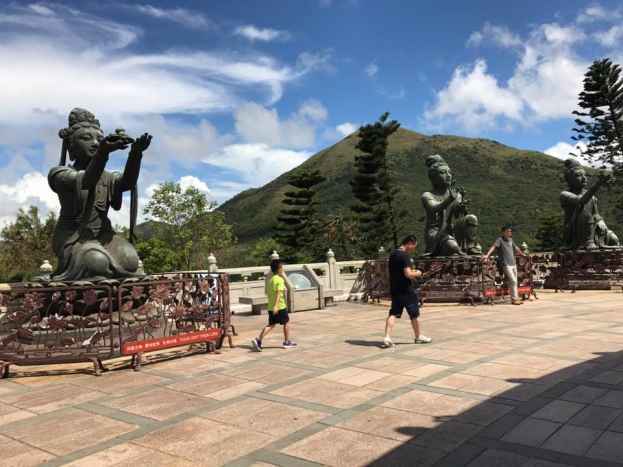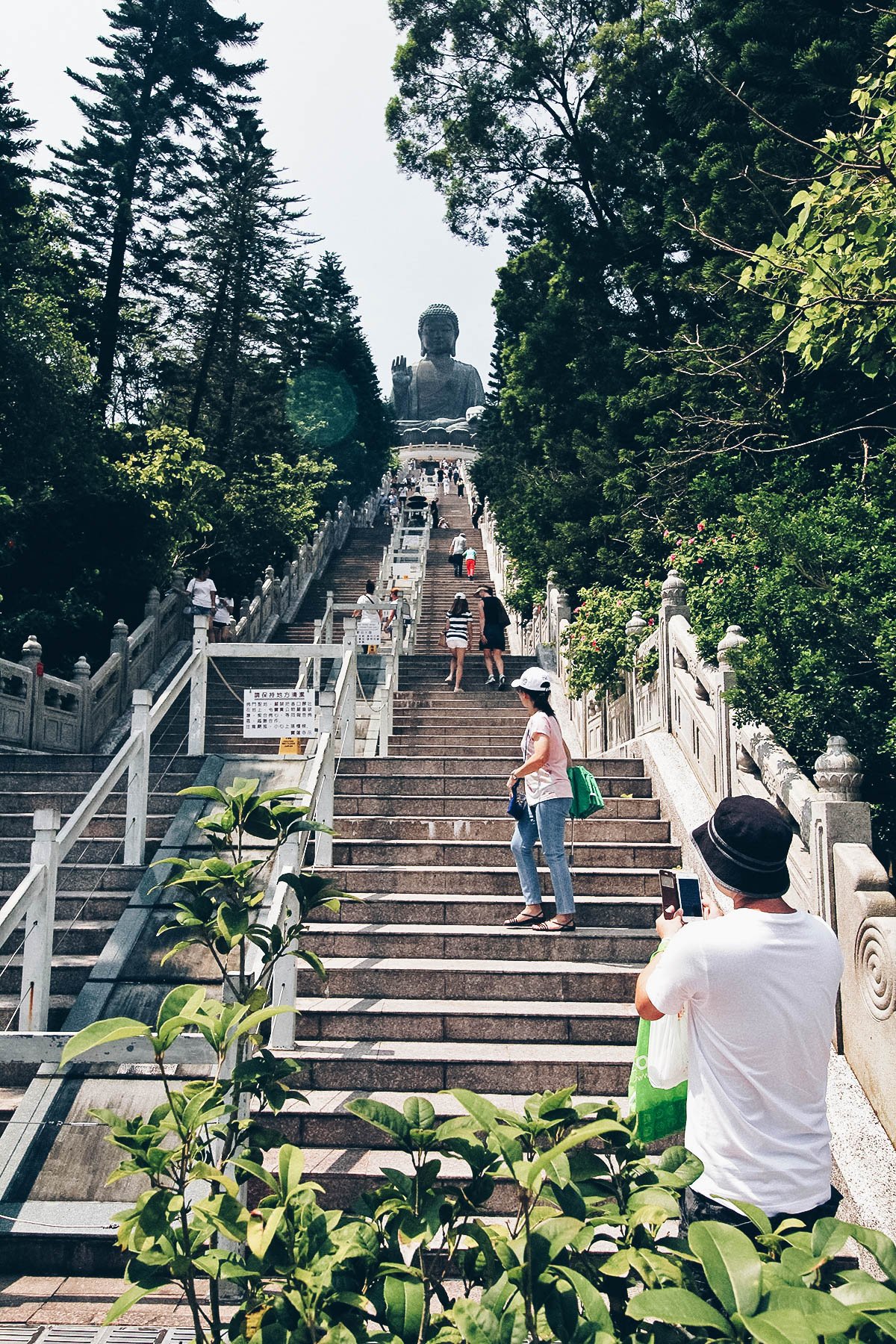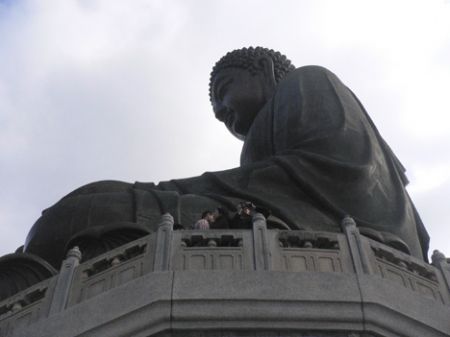Discovering Hong Kong Big Buddha for Spiritual Serenity

Here at jusha.travel, we love sharing tips to make your China journey unforgettable! Embarking on a quest for tranquility amidst the bustling energy of Hong Kong might seem paradoxical, but the Hong Kong Big Buddha, perched majestically on Lantau Island, offers just that—a serene haven for spiritual reflection. This monumental figure, officially known as the Tian Tan Buddha, invites travelers to step away from the city’s frenetic pace and explore spiritual attractions Hong Kong has to offer. As part of our Hong Kong travel guide, this post will guide you through its history, symbolism, and the transformative Hong Kong cultural experiences that await. Whether you’re a seasoned explorer or new to China travel, the Big Buddha Lantau promises profound peace and cultural insights, blending ancient wisdom with modern accessibility.
The Origins and History of the Hong Kong Big Buddha

To truly appreciate the Hong Kong Big Buddha, let’s delve into its fascinating backstory. Conceived in the early 1990s by the Po Lin Monastery on Lantau Island, this grand statue was inspired by the abbot’s travels to Japan and Taiwan. Construction began in 1990 and concluded in 1993, overcoming challenges to create what is now the world’s second-largest outdoor seated bronze Buddha. Standing at 34 meters tall and weighing over 250 tons, its dome-shaped base mirrors Beijing’s Temple of Heaven, symbolizing harmony between heaven and earth. This connection to China’s imperial heritage highlights how cultural attractions Hong Kong often echo the mainland’s rich history. When you visit, remember that the statue represents Buddhist ideals of stability and prosperity, making it a cornerstone of Hong Kong spiritual attractions. For more on Hong Kong’s top sights, check our guide to Exploring Hong Kong: A Comprehensive Guide to Its Top Attractions.
Architectural Wonders and Symbolic Significance

The Big Buddha Lantau is a masterpiece of craftsmanship, assembled from over 200 bronze pieces on a lotus flower pedestal—an emblem of purity in Buddhism. Ascending the 268-step staircase reveals six smaller statues below, each offering symbolic gifts like incense or flowers, embodying the Six Perfections of generosity and wisdom. This design not only showcases architectural ingenuity but also serves as a meditation on life’s virtues. The statue’s northward gaze overlooking China reinforces its spiritual depth, inviting contemplation from any background. In our Hong Kong travel guide, we emphasize how such cultural attractions Hong Kong blend tradition with serene beauty, perfect for those seeking mindful escapes in a tech-savvy city. If you enjoy Hong Kong cultural experiences tied to food, explore our piece on Hong Kong Food Advice: A Comprehensive Guide for culinary adventures nearby.
Spiritual Experiences and Visitor Insights

Visiting the Hong Kong Big Buddha transcends mere sightseeing; it’s a journey inward. The ascent through mist-shrouded highlands offers panoramic views of the South China Sea and nearby Po Lin Monastery, where morning meditations and vegetarian meals foster calm. Many report this as a pilgrimage of the spirit, encouraging mindfulness regardless of faith. For authentic Hong Kong spiritual attractions, arrive early to witness the peaceful ambiance, and consider joining a monk-led tour for deeper cultural immersion. Reflecting its significance as a sanctuary for renewal, the site welcomes all seekers. This experience underscores why the Big Buddha is a highlight in Hong Kong cultural experiences, providing respite from urban life. To pair with luxury stays, read about Unveiling the Top Luxury Hotels in Hong Kong: A Traveler’s Paradise.
Practical Tips for Your Visit to Big Buddha Lantau

Planning a trip to the Big Buddha Lantau is straightforward with our Hong Kong travel guide recommendations. Accessible via the scenic Ngong Ping 360 cable car from Tung Chung (tickets around HKD $185 round-trip), or by bus, it’s ideal for a day excursion. Open year-round, mornings offer quieter experiences in the cooler highlands. Entry to the statue is free, but a small fee applies for the museum. Dress modestly for this sacred site, and respect the peaceful atmosphere by speaking softly. Nearby, explore Ngong Ping Village for lunch featuring vegetarian Buddhist cuisine. For tech-savvy travelers, use apps like Google Translate or WeChat for seamless navigation. This spiritual retreat fits perfectly into cultural attractions Hong Kong itineraries. For lively stories from recent visits, check IShowSpeed’s Day Five Hong Kong Frenzy: Chaos, Culture, and Glory.
Culinary and Cultural Ties While Exploring Hong Kong Spiritual Attractions

Beyond serenity, the Hong Kong Big Buddha area offers enriching Hong Kong cultural experiences through food and community. Po Lin Monastery’s vegetarian dishes, like steamed buns and rice paper rolls, provide flavorful insights into Buddhist culinary traditions. Pair your visit with Hong Kong’s street food scene, where dim sum represents communal harmony. This fusion highlights how spiritual attractions Hong Kong extend to everyday culture, encouraging reflection on balance in life. Try local specialties like preserved ginger or herbal teas for an authentic touch. Such experiences deepen your understanding of China’s cultural blend. For a detailed food guide, see our post on How to Savor Authentic Dim Sum in Hong Kong’s Best Spots. And to learn broader traditions, explore Top 10 Chinese Cultural Traditions Every Traveler Should Know.
In conclusion, discovering the Hong Kong Big Buddha isn’t just about viewing a statue—it’s about embracing spiritual serenity amidst the energy of China travel. Here at jusha.travel, we believe these Hong Kong spiritual attractions and cultural attractions Hong Kong enrich every journey, offering a bridge between ancient wisdom and modern life. Whether you’re drawn by history, symbolism, or peaceful meditation, this Lantau gem awaits to rejuvenate your soul.
What was your most memorable moment at a spiritual site in Hong Kong? Share in the comments below! For more travel inspiration, visit jusha.travel for guides on China’s wonders, or dive into our articles about night markets and festivals.
Ready to explore? Don’t forget to book your cable car tickets in advance for the best experience!

